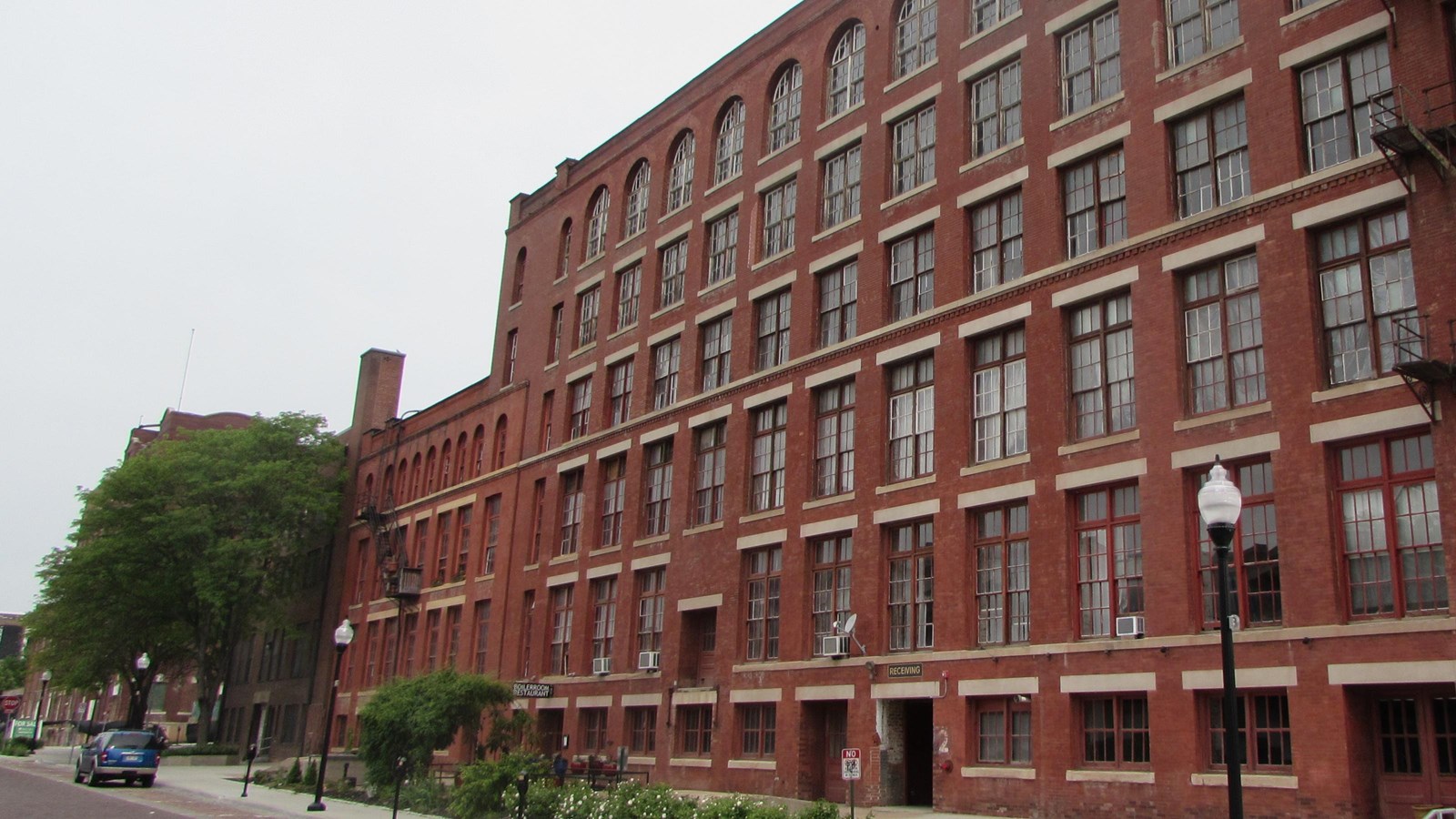Last updated: September 1, 2022
Place
Omaha Rail and Commerce Historic District

David Calease, NPS
Quick Facts
Location:
Nineteen blocks in the southeast corner of downtown Omaha. It is bounded by 9th, Jackson, and 15th Streets with the southeast portion extending south to Pacific Street.
Significance:
Industry; Commerce; Transportation
Designation:
National Register of Historic Places
MANAGED BY:
Private Property Owners
The Omaha Rail and Commerce Historic District incorporates nineteen blocks in the southeast corner of downtown Omaha into its National Register of Historic Places boundaries. The district includes a variety of buildings influenced by the railroad industry, illuminating the diverse commercial activities in the city during the last decades of the nineteenth century. Most of the buildings within the district maintain a high degree of historical integrity and several are also listed individually in the National Register of Historic Places. The district also boasts buildings designed by prominent architects including Louis Mendelssohn, George Fisher and Harry Lawrie – both individually and as a firm – John Latenser, Sr., Thomas Kimball, Gilbert Underwood, Joseph Guth, and John McDonald.
The Omaha Rail and Commercial Historic District is an example of how commerce and transportation industries grew in tandem in Omaha. The completion of the transcontinental railroad in 1869 increased the opportunity for trade in Omaha. Commerce flourished as industry and supply lines developed along railroad routes turning Omaha into a major distribution center for Nebraska and other western states. Commercial growth in the district was encouraged by improvements in transportation and communication systems as well as the Union Pacific Railroad’s policy to promote traffic.
The buildings of the Omaha Rail and Commerce Historic District are an array of intended uses and architectural styles. Some were large jobbing warehouses and manufacturing buildings, while others housed transfer and storage companies. Other buildings served the needs of the new class of distributers and manufacturers who opened service businesses like restaurants, bars, pool halls, printing houses, and supply companies. Their variety is a testament to the diverse commercial and industrial pursuits found in Omaha. They all, however, took advantage of the location of railroad lines either for their customers or for shipping and receiving goods.
Even today, the physical appearance of the district reflects the influence of railroad traffic. The district is divided by the 10th Street viaduct which connects the southern wing of the district with the rest. Under the viaduct, visitors can see the Union Pacific and Burlington Northern Railroad tracks.
The Omaha Rail and Commercial Historic District is an example of how commerce and transportation industries grew in tandem in Omaha. The completion of the transcontinental railroad in 1869 increased the opportunity for trade in Omaha. Commerce flourished as industry and supply lines developed along railroad routes turning Omaha into a major distribution center for Nebraska and other western states. Commercial growth in the district was encouraged by improvements in transportation and communication systems as well as the Union Pacific Railroad’s policy to promote traffic.
The buildings of the Omaha Rail and Commerce Historic District are an array of intended uses and architectural styles. Some were large jobbing warehouses and manufacturing buildings, while others housed transfer and storage companies. Other buildings served the needs of the new class of distributers and manufacturers who opened service businesses like restaurants, bars, pool halls, printing houses, and supply companies. Their variety is a testament to the diverse commercial and industrial pursuits found in Omaha. They all, however, took advantage of the location of railroad lines either for their customers or for shipping and receiving goods.
Even today, the physical appearance of the district reflects the influence of railroad traffic. The district is divided by the 10th Street viaduct which connects the southern wing of the district with the rest. Under the viaduct, visitors can see the Union Pacific and Burlington Northern Railroad tracks.
